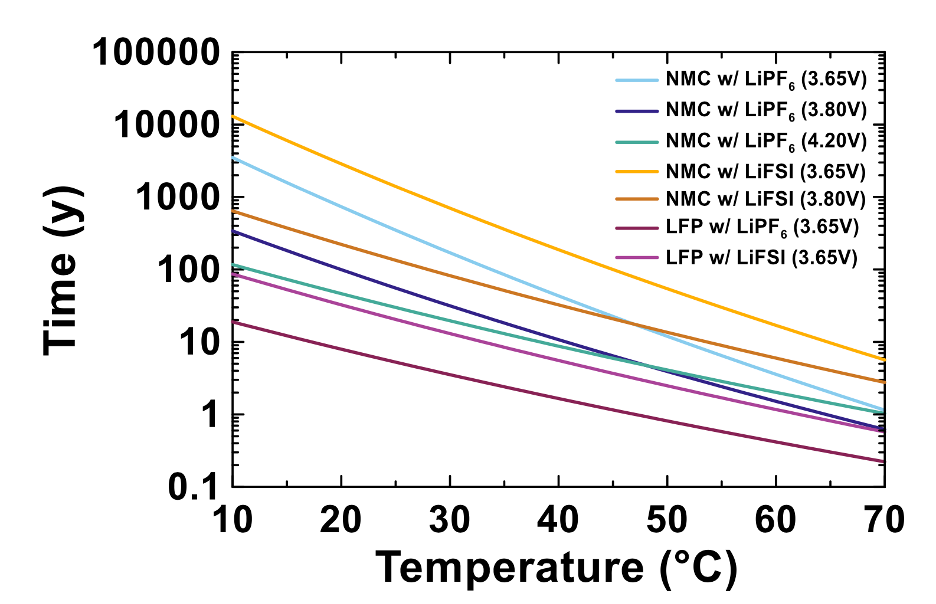By Kyle Proffitt
May 31, 2022 | Following up on results discussed at the 2022 International Battery Seminar, Jeff Dahn’s research group at Dalhousie University has now published work demonstrating the attainability of 100-year batteries. The work, “Li[Ni0.5Mn0.3Co0.2]O2 as a Superior Alternative to LiFePO4 for Long-Lived Low Voltage Li-Ion Cells,” was published May in The Journal of the Electrochemical Society (DOI: 10.1149/1945-7111/ac67b5).
As reported previously, Dahn, the NSERC/Tesla Canada Chair at Dalhousie University, was able to achieve the extended battery lifetime using a single-crystal NMC532 design with balanced, reduced graphite content for cycling at lower voltages of 3.65 or 3.80 V. The cells were designed for comparison to LiFePO4 (LFP) cells, and the authors reported both higher energy density and that “at all cycling temperatures considered, low voltage NMC532 cells provided superior capacity retention compared to both LFP cells and NMC532 cells balanced for and operated up to 4.20 V.” The reduced voltage enables the use of LiFSI-containing electrolytes, which corresponds to improved high-temperature operation (at 40 °C, 55 °C ,and 70 °C) relative to LiPF6 electrolyte and further extends lifetime. Ultra-high precision coulometry and electrochemical impedance spectroscopy revealed improved coulombic efficiency for the cells cycled at 3.80 V and allowed for the projection of “lifetimes approaching a century at 25 °C.”

Despite the lower initial cost of LFP cells, the authors suggest that these lower voltage NMC cells can offer improved lifetime cost in specific applications warranting extreme longevity, such as stationary energy storage, EV batteries in vehicle-to-grid operation, and battery leasing services. Innovation in this area is set to continue: “Future work on low voltage NMC cells includes application of this cell design to fast charge applications, use of low cobalt and high nickel NMC materials and the use of blended NMC and LFP positive electrodes,” the authors write.







